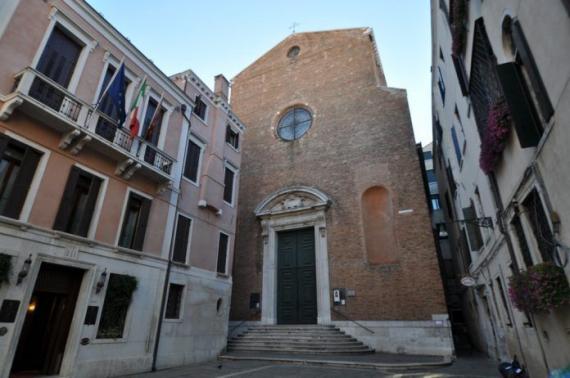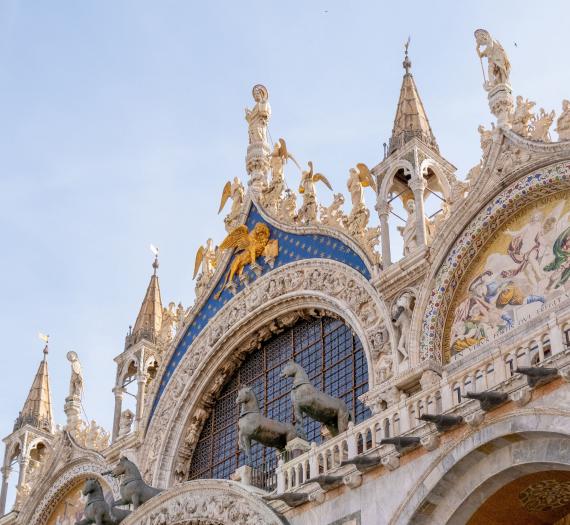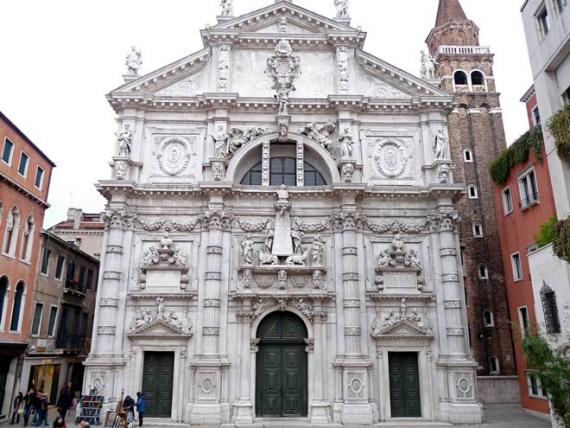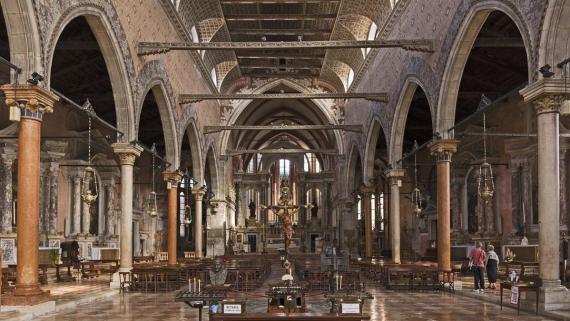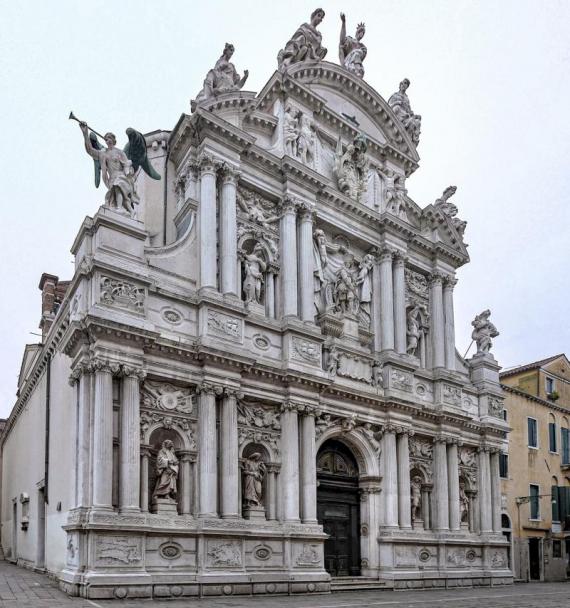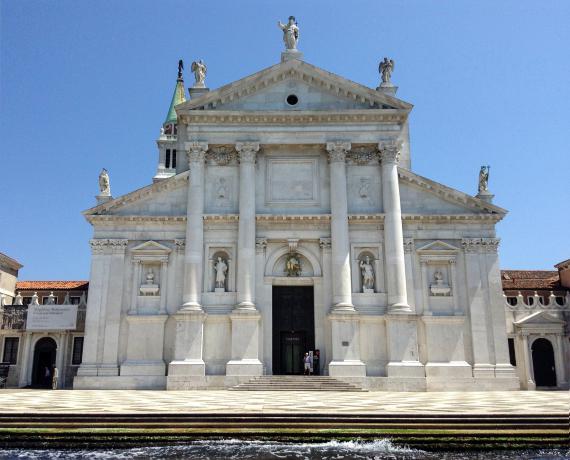Also known as “Fava”, the church has an elegant 18th century interior with a rum oval plan, in which many rococo masterpieces can be seen, such as L’educazione della Vergine by Tiepolo.
In Venice, there is an unspecified number of churches and bell towers that tell a piece of the city's history and art.
In this section, the most important churches of Venice are described, each with its own page containing historical, artistic, and cultural information.
You will also find advice and information on opening hours, prices, and contacts to facilitate your visit.
Fulcrum of the city’s religious and public life, place where all the Doges were legitimize, this church is one of the main symbols of Venice and of its history. It was built in the 9th century to treasure the remains of Evangelist Marc, patron saint of the city stolen from Alexandria in 828, it is a magnificent example of the Romanesque-Byzantine style.
In the city center, at the end of the “Mercerie” street, the church of San Salvador is according to the tradition one of the three oldest churches in Venice. Rebuilt at the beginning of ‘500, it overlooks the namesake square with its white Baroque façade rebuilt on 1663 by Giuseppe Sardi and decorated with sculptures
Built by the Augustinian Hermits in the 13th century, the church lays at the far end of the namesake square; it was completely rebuilt a century later with decorations and structure typical of the Venetian Flamboyant Gothic architectures. The magnificent marble gate decoration is by Bartolomeo Bon (1442).
This ancient church takes the name from the Jubanico family, that founded the church in the 9th century dedicating it to the Maria del Giglio. Amazing is the Baroque façade by Sardi. In its interior, works by Tintoretto and a Holy Family by Rubens, the only Flemish painting in Venice.
The important Benedictine monastery, headquarter of the Fondazione «Giorgio Cini» from 1951, rises on the little namesake island with a complex set of surroundings realized under the project of Andrea Palladio and organized around the church and the two cloisters.

